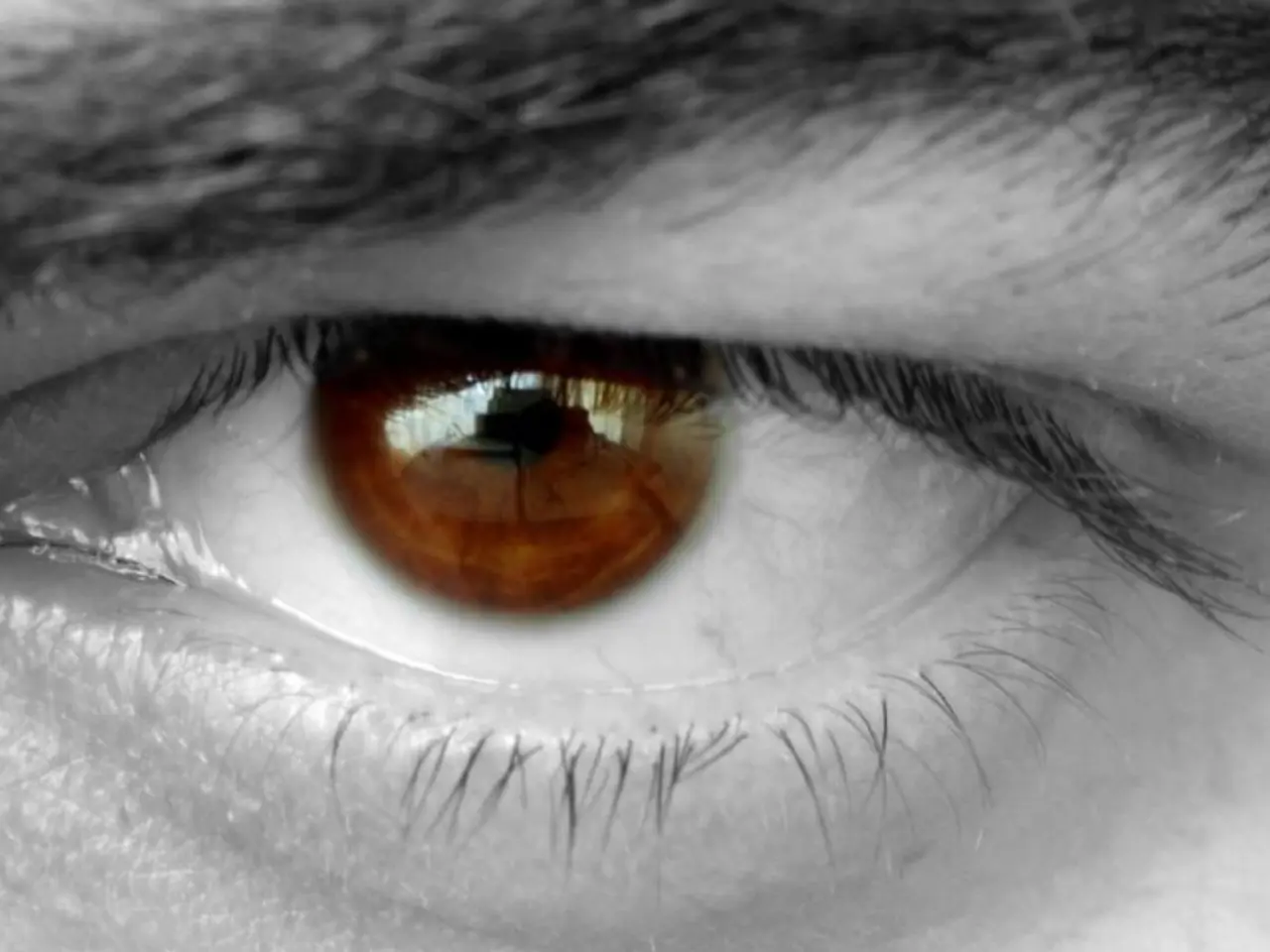Links Between Diabetes and Glaucoma
The association between glaucoma and diabetes: an exploration
Diabetes and glaucoma, two common health conditions, share some significant connections. Both conditions involve inflammation and oxidative stress, which can exacerbate each other. Diabetes, a condition that affects the body's ability to process blood sugar, can lead to vascular changes that may increase the risk of glaucoma by affecting blood flow to the optic nerve[1][2].
Medications used to manage diabetes, such as GLP-1 receptor agonists, can have both positive and negative effects on eye health. Some studies suggest that these medications may reduce the risk of glaucoma by improving insulin sensitivity and reducing oxidative stress[1][3]. However, other research indicates that certain GLP-1 agonists may increase the risk of optic neuropathy[1][3].
Risk Factors
Several common risk factors contribute to both diabetes and glaucoma. Factors such as obesity, hypertension, and poor metabolic control are prevalent in both conditions[2][4]. Additionally, age, genetics, and lifestyle factors play significant roles in the development of both conditions.
- Diabetes: Uncontrolled diabetes can lead to diabetic retinopathy, a condition where high blood sugar levels damage the blood vessels in the retina. Diabetic retinopathy shares some risk factors with glaucoma, such as high blood pressure and metabolic disorders[2][4].
- Age: Both conditions are more prevalent with increasing age.
- Genetics: Family history plays a role in both conditions.
- Lifestyle: Poor diet and lack of physical activity can contribute to both conditions[2][4].
Symptoms
- Diabetes: Symptoms include high blood sugar levels, increased thirst, frequent urination, and blurred vision due to blood sugar fluctuations[4].
- Glaucoma: Often asymptomatic in early stages, but can lead to progressive vision loss if untreated. Optic nerve damage may cause blind spots or loss of peripheral vision[1].
Treatment Options
Treatment for both conditions varies depending on the severity and specific circumstances.
- Diabetes:
- Medications: Insulin, metformin, and GLP-1 receptor agonists.
- Lifestyle Management: Diet, exercise, and regular monitoring of blood sugar levels[2][4].
- Glaucoma:
- Medications: Eye drops to reduce intraocular pressure (IOP), oral medications.
- Surgery: Laser or traditional surgery to reduce IOP[1].
Prevention Strategies
Preventing vision loss requires early detection and management of both conditions. Regular health check-ups and adherence to treatment plans are crucial for maintaining eye health.
- Diabetes:
- Manage blood sugar levels.
- Monitor blood pressure and cholesterol.
- Quit smoking.
- Regular eye exams[2][4].
- Glaucoma:
- Regular eye exams.
- Maintain a healthy lifestyle to reduce overall risk.
- Consider protective effects of GLP-1 receptor agonists if applicable[1][5].
Discussing family eye health history is important as glaucoma can be a hereditary condition. Regular dilated eye exams can help diagnose glaucoma early, allowing for early treatment and prevention of vision loss. If someone notices their peripheral vision becoming blurry, they should speak with their doctor and arrange a dilated eye exam.
[1] Mayo Clinic. (2021). Glaucoma. [online] Available at: https://www.mayoclinic.org/diseases-conditions/glaucoma/symptoms-causes/syc-20371718
[2] American Diabetes Association. (2021). Diabetic Retinopathy. [online] Available at: https://www.diabetes.org/diabetes/diabetes-complications/diabetes-complications-a-z/diabetic-retinopathy
[3] National Eye Institute. (2021). Diabetes and Vision. [online] Available at: https://nei.nih.gov/health/diabetes/diabetes
[4] National Institute of Diabetes and Digestive and Kidney Diseases. (2021). Diabetes. [online] Available at: https://www.niddk.nih.gov/health-information/diabetes
[5] National Eye Institute. (2021). GLP-1 Receptor Agonists. [online] Available at: https://nei.nih.gov/health/diabetes/diabetes/glp1-agonists
- The science behind diabetes and glaucoma reveals shared connections, including inflammation and oxidative stress that can worsen each other.
- Diabetes, a chronic disease affecting blood sugar processing, could potentially increase the risk of glaucoma due to vascular changes impacting optic nerve blood flow.
- Medications like GLP-1 receptor agonists, used for diabetes management, can have various effects on eye health, both positive and negative.
- Some studies propose that these medications may decrease the risk of glaucoma by improving insulin sensitivity and reducing oxidative stress.
- However, other research suggests that certain GLP-1 agonists may elevate the risk of optic neuropathy.
- Obesity, hypertension, and poor metabolic control are common risk factors for both diabetes and glaucoma.
- Age, genetics, and lifestyle factors such as diet and physical activity also play significant roles in the development of these conditions.
- Diabetes can lead to diabetic retinopathy, which shares risk factors with glaucoma, like high blood pressure and metabolic disorders.
- Both conditions are more prevalent with age.
- Family history plays a role in both diabetes and glaucoma development.
- Poor diet and lack of exercise can contribute to the onset of both conditions.
- Symptoms of diabetes include high blood sugar levels, increased thirst, frequent urination, and blurred vision due to blood sugar fluctuations.
- In its early stages, glaucoma is often asymptomatic but can lead to progressive vision loss if untreated.
- Vision loss prevention requires early detection and management of both conditions through regular health check-ups and adherence to treatment plans.
- For diabetes, maintaining blood sugar levels, monitoring blood pressure and cholesterol, quitting smoking, and regular eye exams are crucial for eye health.
- Glaucoma prevention involves regular eye exams, maintaining a healthy lifestyle, and considering the protective effects of GLP-1 receptor agonists if applicable.
- Discussing family eye health history is essential as glaucoma can be hereditary.
- Regular dilated eye exams can help diagnose glaucoma early, allowing for early treatment and prevention of vision loss.
- If someone notices their peripheral vision becoming blurry, they should speak with their doctor and arrange a dilated eye exam.
- Men's health, an essential aspect of health and wellness, may be influenced by these links between diabetes and glaucoma.
- Women's health is also impacted, considering the prevalence of these conditions among various women's health issues.
- Proper parenting involves understanding the potential health implications for children, including risks associated with diabetes and glaucoma.
- Weight management and healthy nutrition are essential for overall health and can help minimize the risk of chronic diseases like diabetes and glaucoma.
- Cardiovascular health plays a vital role in managing diabetes, as heart disease is a common complication.
- Managing diabetes can help reduce the risk of complications such as diabetic retinopathy, which may share risk factors with glaucoma.
- The manufacturing industry must prioritize workplace wellness, ensuring employees with medical conditions like diabetes receive proper care and accommodations.
- Mental health, an often overlooked aspect of health, can be impacted by chronic diseases like diabetes and the potential vision loss associated with glaucoma.
- Aging population growth requires increased focus on healthcare for elderly individuals, especially those at risk for diabetes and glaucoma.
- In the future, environmental science, finance, energy, and even aerospace industries may need to address climate change, autoimmune disorders, and neurological disorders, which could potentially influence the links between diabetes and glaucoma.








